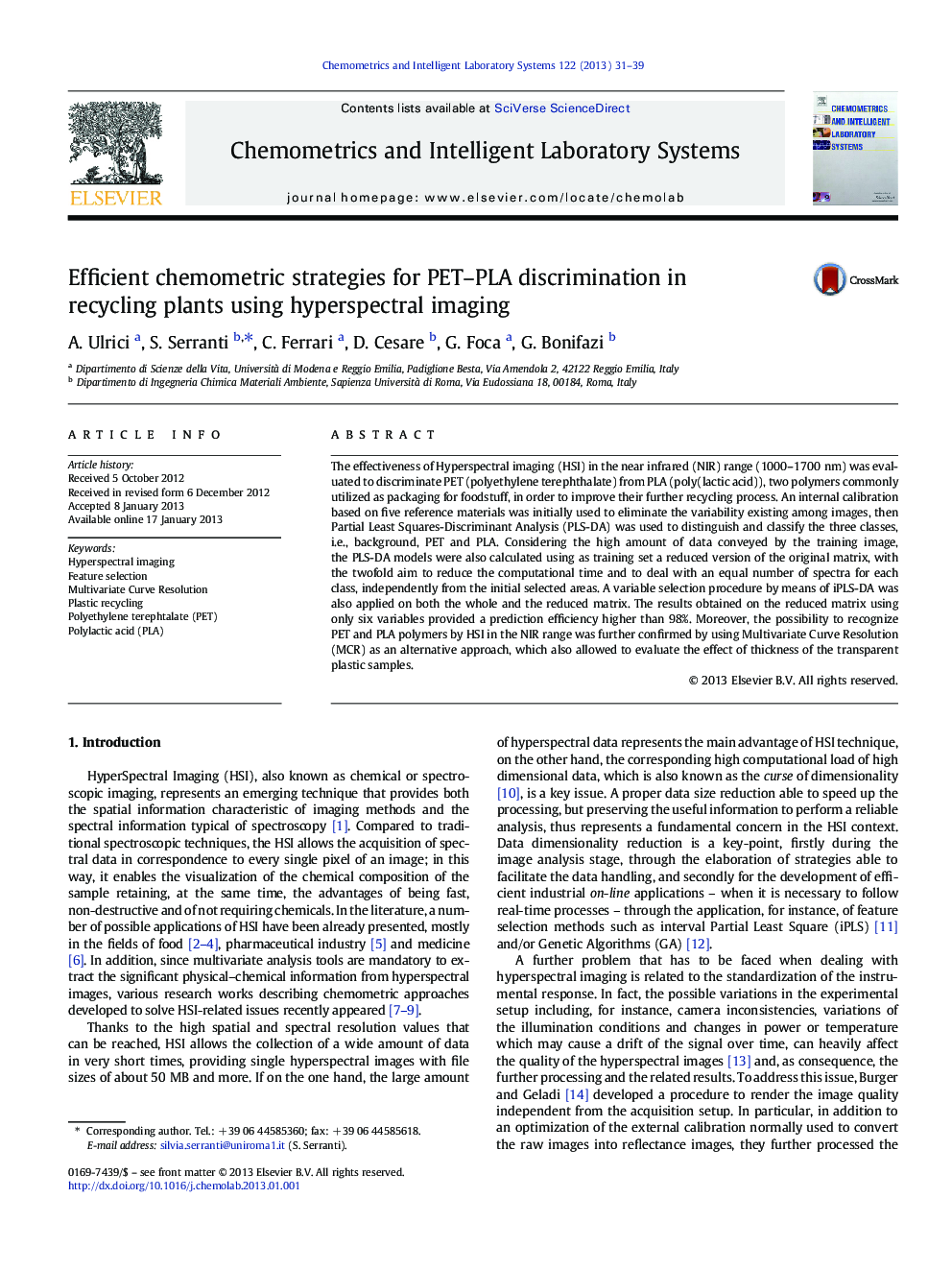| کد مقاله | کد نشریه | سال انتشار | مقاله انگلیسی | نسخه تمام متن |
|---|---|---|---|---|
| 1180754 | 1491556 | 2013 | 9 صفحه PDF | دانلود رایگان |

The effectiveness of Hyperspectral imaging (HSI) in the near infrared (NIR) range (1000–1700 nm) was evaluated to discriminate PET (polyethylene terephthalate) from PLA (poly(lactic acid)), two polymers commonly utilized as packaging for foodstuff, in order to improve their further recycling process. An internal calibration based on five reference materials was initially used to eliminate the variability existing among images, then Partial Least Squares-Discriminant Analysis (PLS-DA) was used to distinguish and classify the three classes, i.e., background, PET and PLA. Considering the high amount of data conveyed by the training image, the PLS-DA models were also calculated using as training set a reduced version of the original matrix, with the twofold aim to reduce the computational time and to deal with an equal number of spectra for each class, independently from the initial selected areas. A variable selection procedure by means of iPLS-DA was also applied on both the whole and the reduced matrix. The results obtained on the reduced matrix using only six variables provided a prediction efficiency higher than 98%. Moreover, the possibility to recognize PET and PLA polymers by HSI in the NIR range was further confirmed by using Multivariate Curve Resolution (MCR) as an alternative approach, which also allowed to evaluate the effect of thickness of the transparent plastic samples.
► Classification of PET and PLA by NIR-HSI was carried out for recycling purposes.
► A new internal calibration procedure allowed to optimize image reproducibility.
► An efficient data compression strategy was developed (max compr. ratio = 3 × 10^− 4).
► PLS-DA, iPLS-DA and MCR-ALS were applied to distinguish PET from PLA.
► PET and PLA were correctly identified, also using the compressed datasets.
Journal: Chemometrics and Intelligent Laboratory Systems - Volume 122, 15 March 2013, Pages 31–39